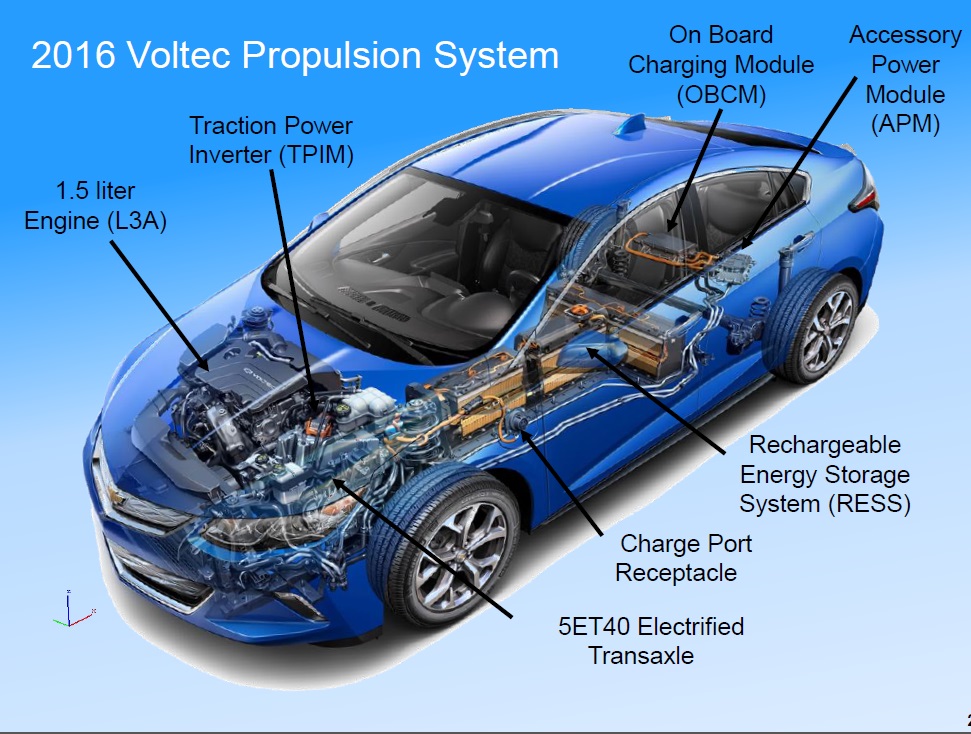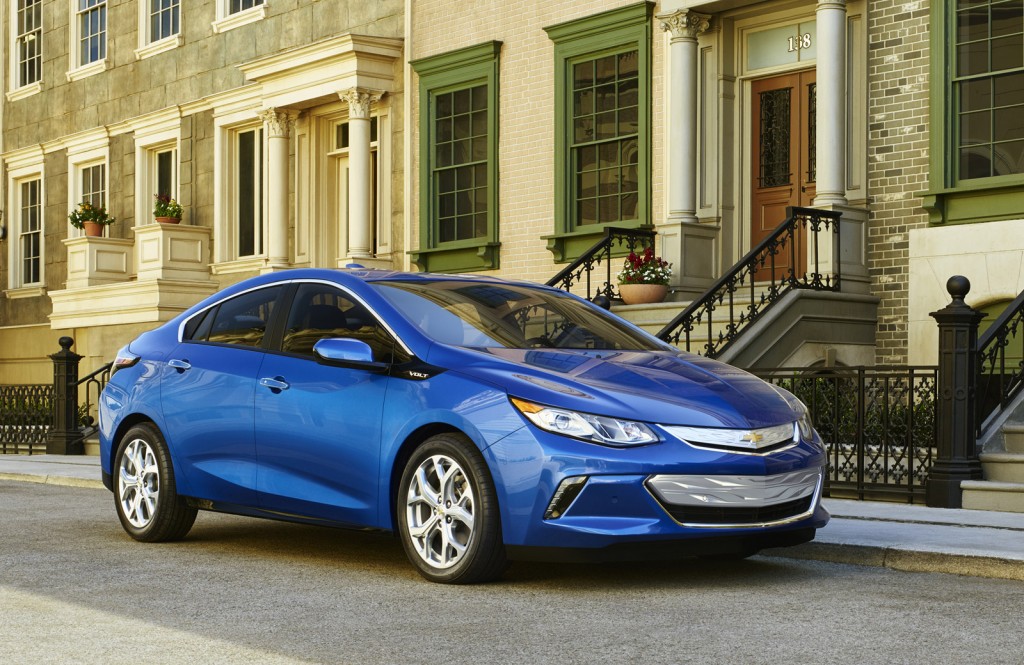The 2016 Chevrolet Volt was officially unveiled at January's Detroit Auto Show, so there won't be a lot of focus on the new plug-in hybrid with the 50-mile range at this week's New York Auto Show.
Instead, it'll be all about the new 2016 Chevy Malibu mid-size sedan, including the new Malibu Hybrid model that uses an adapted version of the Voltec powertrain--and promises combined fuel-economy ratings of 45 miles per gallon or more.
DON'T MISS: Chevrolet Malibu Hybrid: Volt's Sibling Without A Plug May Be First Of Several
But according to an article yesterday in trade journal Automotive News (subscription required), pre-production models of the Chevy Volt have already started to roll down the lines at GM's Detroit-Hamtramck Assembly Plant.
The 2016 Volt will go on sale during the second half of the year, possibly as early as July or August.

2016 Chevrolet Volt plug-in hybrid - details of Voltec drivetrain from SAE presentations, Feb 2015
But we'll learn about what may be the Volt's most crucial specification by the end of next month, according to Automotive News: its price.
Speculation has ranged far and wide about how Chevy will price the second-generation Volt.
ALSO SEE: Why We're Calling The 2016 Chevy Volt A Plug-In Hybrid
The original 2011 Volt was priced at $41,000, which was cut to $39,995 for 2012 (with some equipment deleted) and then cut again to $34,995 for the 2014 model year.
The average transaction price of a vehicle in the U.S. is now roughly $32,000; the goal of the 2014 price cut was to bring the Volt closer to that level to get it into the "consideration set" of buyers who completely ignore cars of $40,000 or more.

2016 Chevrolet Volt
GM faces a challenge in pricing the 2016 Volt, which is still likely several thousand dollars more costly to produce than a comparable 2016 Chevy Cruze compact sedan.
Does it offer a base price of, say, $29,995 to boost awareness--and try to offer most Volts in higher trim levels, with far more options, to boost the car's average transaction price?
Or should Chevy start the 2016 Volt higher than that critical $30,000 barrier, aiming for faster break-even on its most technologically advanced vehicle--while still presumably coming in at least somewhat below today's $35,000?
MORE: Why Can't Other Plug-In Hybrids Copy Chevy Volt's All-Electric Running?
Playing into the decision may be comments by Nissan executives that unlike any other model in its lineup, its Leaf battery-electric car sells not in a Bell Curve of prices but a U-shape.
That is, far more base Leaf S models and high-end Leaf SL models are sold than the mid-range SV trim level, which on most vehicles is by far the most popular choice.
While Chevy executives are no doubt discussing the pros and cons, we now only have a month to wait before we know the results of their debates.
_________________________________________________













